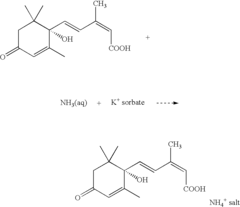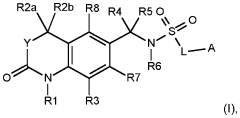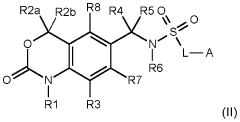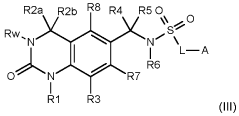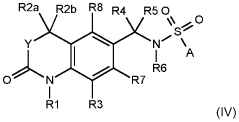Aligning Abscisic Acid Strategies with Precision Agriculture Tools
JUL 14, 20259 MIN READ
Generate Your Research Report Instantly with AI Agent
Patsnap Eureka helps you evaluate technical feasibility & market potential.
ABA and Precision Ag Background
Abscisic acid (ABA) is a plant hormone that plays a crucial role in regulating various physiological processes, including stress responses, seed dormancy, and plant growth. In recent years, the integration of ABA strategies with precision agriculture tools has emerged as a promising approach to enhance crop productivity and resilience in the face of environmental challenges.
Precision agriculture, also known as smart farming, utilizes advanced technologies such as remote sensing, GPS, and data analytics to optimize crop management practices. This approach allows farmers to make informed decisions based on real-time data, leading to more efficient use of resources and improved crop yields.
The convergence of ABA research and precision agriculture has opened up new avenues for crop improvement and sustainable farming practices. By leveraging the power of precision agriculture tools, researchers and farmers can now monitor and manipulate ABA levels in plants with unprecedented accuracy and precision.
One of the key areas where this integration has shown promise is in drought management. ABA is known to play a critical role in plant responses to water stress, and precision agriculture tools can help farmers detect early signs of drought stress in their crops. By combining these two approaches, it becomes possible to develop targeted irrigation strategies that optimize water use efficiency while maintaining crop health and productivity.
Another important application of this integrated approach is in the development of stress-tolerant crop varieties. By using precision agriculture tools to monitor plant responses to various environmental stressors, researchers can identify genetic variants with enhanced ABA-mediated stress tolerance. This information can then be used to guide breeding programs aimed at developing more resilient crop varieties.
The integration of ABA strategies with precision agriculture tools also has significant implications for pest and disease management. ABA is involved in plant defense responses, and by monitoring ABA levels and associated physiological changes, farmers can detect early signs of pest or pathogen infection. This early detection allows for more timely and targeted interventions, reducing the need for broad-spectrum pesticides and minimizing environmental impact.
As climate change continues to pose challenges to global agriculture, the alignment of ABA strategies with precision agriculture tools offers a promising path forward. This integrated approach has the potential to revolutionize crop management practices, leading to more sustainable and resilient farming systems that can adapt to changing environmental conditions while meeting the growing global demand for food.
Precision agriculture, also known as smart farming, utilizes advanced technologies such as remote sensing, GPS, and data analytics to optimize crop management practices. This approach allows farmers to make informed decisions based on real-time data, leading to more efficient use of resources and improved crop yields.
The convergence of ABA research and precision agriculture has opened up new avenues for crop improvement and sustainable farming practices. By leveraging the power of precision agriculture tools, researchers and farmers can now monitor and manipulate ABA levels in plants with unprecedented accuracy and precision.
One of the key areas where this integration has shown promise is in drought management. ABA is known to play a critical role in plant responses to water stress, and precision agriculture tools can help farmers detect early signs of drought stress in their crops. By combining these two approaches, it becomes possible to develop targeted irrigation strategies that optimize water use efficiency while maintaining crop health and productivity.
Another important application of this integrated approach is in the development of stress-tolerant crop varieties. By using precision agriculture tools to monitor plant responses to various environmental stressors, researchers can identify genetic variants with enhanced ABA-mediated stress tolerance. This information can then be used to guide breeding programs aimed at developing more resilient crop varieties.
The integration of ABA strategies with precision agriculture tools also has significant implications for pest and disease management. ABA is involved in plant defense responses, and by monitoring ABA levels and associated physiological changes, farmers can detect early signs of pest or pathogen infection. This early detection allows for more timely and targeted interventions, reducing the need for broad-spectrum pesticides and minimizing environmental impact.
As climate change continues to pose challenges to global agriculture, the alignment of ABA strategies with precision agriculture tools offers a promising path forward. This integrated approach has the potential to revolutionize crop management practices, leading to more sustainable and resilient farming systems that can adapt to changing environmental conditions while meeting the growing global demand for food.
Market Demand Analysis
The market demand for aligning abscisic acid (ABA) strategies with precision agriculture tools has been steadily growing in recent years. This integration represents a significant opportunity to enhance crop management and improve agricultural productivity in the face of climate change and resource constraints.
Precision agriculture, which utilizes advanced technologies to optimize farming practices, has seen widespread adoption across various agricultural sectors. The global precision agriculture market was valued at $5.09 billion in 2019 and is projected to reach $12.8 billion by 2027, growing at a CAGR of 12.7% from 2020 to 2027. This growth trajectory indicates a strong market demand for innovative solutions that can be integrated into existing precision agriculture frameworks.
The incorporation of ABA strategies into precision agriculture tools addresses a critical need in the agricultural industry. ABA, a plant hormone that plays a crucial role in stress response and water regulation, has the potential to significantly improve crop resilience and water use efficiency. As water scarcity becomes an increasingly pressing issue in many agricultural regions, the demand for water-saving technologies is on the rise.
Climate change has led to more frequent and severe drought events, affecting crop yields worldwide. This has created a substantial market for drought-resistant crop varieties and management strategies. The global market for drought-resistant crops is expected to reach $22.3 billion by 2025, with a CAGR of 5.4% from 2020 to 2025. The integration of ABA strategies with precision agriculture tools can tap into this growing market by offering farmers a means to enhance crop drought tolerance and manage water resources more effectively.
Furthermore, there is an increasing demand for sustainable agricultural practices that can reduce environmental impact while maintaining or improving crop yields. The global sustainable agriculture market size was valued at $10.5 billion in 2020 and is projected to reach $26.5 billion by 2028, growing at a CAGR of 12.4% from 2021 to 2028. The alignment of ABA strategies with precision agriculture tools aligns well with this trend, offering a solution that can potentially reduce water usage and chemical inputs while optimizing crop performance.
The market for plant growth regulators, including ABA-based products, is also expanding. The global plant growth regulators market size was valued at $2.1 billion in 2020 and is expected to grow at a CAGR of 9.8% from 2021 to 2028. This growth is driven by the increasing need for crop yield improvement and stress management in agriculture.
In conclusion, the market demand for aligning ABA strategies with precision agriculture tools is robust and multifaceted. It is driven by the need for water-efficient farming practices, climate change adaptation, sustainable agriculture, and improved crop management. As farmers and agricultural businesses seek innovative solutions to address these challenges, the integration of ABA strategies with precision agriculture tools presents a promising market opportunity with significant growth potential.
Precision agriculture, which utilizes advanced technologies to optimize farming practices, has seen widespread adoption across various agricultural sectors. The global precision agriculture market was valued at $5.09 billion in 2019 and is projected to reach $12.8 billion by 2027, growing at a CAGR of 12.7% from 2020 to 2027. This growth trajectory indicates a strong market demand for innovative solutions that can be integrated into existing precision agriculture frameworks.
The incorporation of ABA strategies into precision agriculture tools addresses a critical need in the agricultural industry. ABA, a plant hormone that plays a crucial role in stress response and water regulation, has the potential to significantly improve crop resilience and water use efficiency. As water scarcity becomes an increasingly pressing issue in many agricultural regions, the demand for water-saving technologies is on the rise.
Climate change has led to more frequent and severe drought events, affecting crop yields worldwide. This has created a substantial market for drought-resistant crop varieties and management strategies. The global market for drought-resistant crops is expected to reach $22.3 billion by 2025, with a CAGR of 5.4% from 2020 to 2025. The integration of ABA strategies with precision agriculture tools can tap into this growing market by offering farmers a means to enhance crop drought tolerance and manage water resources more effectively.
Furthermore, there is an increasing demand for sustainable agricultural practices that can reduce environmental impact while maintaining or improving crop yields. The global sustainable agriculture market size was valued at $10.5 billion in 2020 and is projected to reach $26.5 billion by 2028, growing at a CAGR of 12.4% from 2021 to 2028. The alignment of ABA strategies with precision agriculture tools aligns well with this trend, offering a solution that can potentially reduce water usage and chemical inputs while optimizing crop performance.
The market for plant growth regulators, including ABA-based products, is also expanding. The global plant growth regulators market size was valued at $2.1 billion in 2020 and is expected to grow at a CAGR of 9.8% from 2021 to 2028. This growth is driven by the increasing need for crop yield improvement and stress management in agriculture.
In conclusion, the market demand for aligning ABA strategies with precision agriculture tools is robust and multifaceted. It is driven by the need for water-efficient farming practices, climate change adaptation, sustainable agriculture, and improved crop management. As farmers and agricultural businesses seek innovative solutions to address these challenges, the integration of ABA strategies with precision agriculture tools presents a promising market opportunity with significant growth potential.
Current ABA Tech Challenges
The integration of abscisic acid (ABA) strategies with precision agriculture tools faces several significant challenges in the current technological landscape. One of the primary obstacles is the lack of real-time ABA monitoring systems capable of providing accurate and continuous data on plant stress levels. Existing methods often rely on periodic sampling, which may not capture the dynamic nature of plant responses to environmental stressors.
Another challenge lies in the development of precise ABA delivery systems that can respond to localized plant needs. While precision agriculture has made strides in variable rate application of fertilizers and pesticides, the targeted application of plant hormones like ABA remains in its infancy. The complexity of plant physiology and the variability of environmental conditions across a field make it difficult to determine optimal ABA dosages and timing.
Data integration and interpretation pose additional hurdles. The vast amount of data generated by precision agriculture tools, including soil moisture sensors, weather stations, and satellite imagery, needs to be effectively correlated with plant ABA responses. Current algorithms and decision support systems are not yet sophisticated enough to fully interpret this complex interplay and provide actionable insights for ABA application.
The scalability of ABA technologies in large-scale agricultural operations presents another significant challenge. While laboratory and small-scale field trials have shown promising results, translating these findings to commercial agriculture requires overcoming logistical and economic barriers. The cost-effectiveness of ABA strategies compared to traditional agricultural practices remains a concern for widespread adoption.
Furthermore, the variability in plant species' responses to ABA complicates the development of universal solutions. Different crops, and even different varieties within the same species, may require tailored approaches to ABA application, necessitating extensive research and customization of precision agriculture tools.
Regulatory challenges also impede the rapid advancement of ABA technologies in agriculture. The classification and approval processes for ABA-based products as plant growth regulators or biostimulants vary across regions, creating uncertainty for developers and potential users.
Lastly, the integration of ABA strategies with existing farm management systems and practices presents both technical and cultural challenges. Farmers and agronomists need to be trained in the interpretation of ABA-related data and the implementation of new management strategies, which requires significant investment in education and support infrastructure.
Another challenge lies in the development of precise ABA delivery systems that can respond to localized plant needs. While precision agriculture has made strides in variable rate application of fertilizers and pesticides, the targeted application of plant hormones like ABA remains in its infancy. The complexity of plant physiology and the variability of environmental conditions across a field make it difficult to determine optimal ABA dosages and timing.
Data integration and interpretation pose additional hurdles. The vast amount of data generated by precision agriculture tools, including soil moisture sensors, weather stations, and satellite imagery, needs to be effectively correlated with plant ABA responses. Current algorithms and decision support systems are not yet sophisticated enough to fully interpret this complex interplay and provide actionable insights for ABA application.
The scalability of ABA technologies in large-scale agricultural operations presents another significant challenge. While laboratory and small-scale field trials have shown promising results, translating these findings to commercial agriculture requires overcoming logistical and economic barriers. The cost-effectiveness of ABA strategies compared to traditional agricultural practices remains a concern for widespread adoption.
Furthermore, the variability in plant species' responses to ABA complicates the development of universal solutions. Different crops, and even different varieties within the same species, may require tailored approaches to ABA application, necessitating extensive research and customization of precision agriculture tools.
Regulatory challenges also impede the rapid advancement of ABA technologies in agriculture. The classification and approval processes for ABA-based products as plant growth regulators or biostimulants vary across regions, creating uncertainty for developers and potential users.
Lastly, the integration of ABA strategies with existing farm management systems and practices presents both technical and cultural challenges. Farmers and agronomists need to be trained in the interpretation of ABA-related data and the implementation of new management strategies, which requires significant investment in education and support infrastructure.
Existing ABA Solutions
01 Synthesis and production of abscisic acid
Various methods for synthesizing and producing abscisic acid, including chemical synthesis, biotechnological approaches, and extraction from plant sources. These techniques aim to improve the yield and purity of abscisic acid for agricultural and research applications.- Synthesis and production of abscisic acid: Various methods for synthesizing and producing abscisic acid, including chemical synthesis, biotechnological approaches, and extraction from plant sources. These techniques aim to improve the yield and purity of abscisic acid for agricultural and research applications.
- Agricultural applications of abscisic acid: Use of abscisic acid in agriculture for various purposes, such as regulating plant growth, improving stress tolerance, and enhancing crop yield. Applications include seed treatment, foliar sprays, and soil amendments to improve plant performance under different environmental conditions.
- Abscisic acid analogs and derivatives: Development and use of abscisic acid analogs and derivatives with enhanced stability, bioactivity, or specificity. These modified compounds aim to improve the efficacy and applicability of abscisic acid in various fields, including agriculture and biotechnology.
- Abscisic acid in plant stress response: Investigation of abscisic acid's role in plant stress responses, including drought, salinity, and temperature stress. Research focuses on understanding the signaling pathways and molecular mechanisms involved in abscisic acid-mediated stress tolerance.
- Formulations and delivery systems for abscisic acid: Development of various formulations and delivery systems for abscisic acid to improve its stability, bioavailability, and efficacy in different applications. These include encapsulation techniques, controlled-release formulations, and novel carrier systems.
02 Agricultural applications of abscisic acid
Use of abscisic acid in agriculture for various purposes, such as regulating plant growth, improving stress tolerance, and enhancing crop yield. Applications include seed treatment, foliar sprays, and soil amendments to improve plant performance under different environmental conditions.Expand Specific Solutions03 Abscisic acid analogs and derivatives
Development and use of abscisic acid analogs and derivatives with enhanced stability, bioactivity, or specificity. These compounds are designed to improve the efficacy of abscisic acid in various applications, including agriculture and plant research.Expand Specific Solutions04 Formulations and compositions containing abscisic acid
Development of various formulations and compositions containing abscisic acid for improved stability, delivery, and efficacy. These formulations may include encapsulation techniques, controlled-release systems, or combinations with other active ingredients for enhanced performance in agricultural or research applications.Expand Specific Solutions05 Detection and quantification methods for abscisic acid
Development of analytical techniques for detecting and quantifying abscisic acid in plant tissues, seeds, or other biological samples. These methods may include chromatography, spectroscopy, or immunoassays to accurately measure abscisic acid levels for research or quality control purposes.Expand Specific Solutions
Key Industry Players
The alignment of abscisic acid strategies with precision agriculture tools is in a nascent stage, characterized by rapid technological advancements and growing market potential. The global precision agriculture market is expanding, with projections indicating significant growth in the coming years. Companies like Valent BioSciences Corp., BASF Corp., and Syngenta Ltd. are at the forefront of developing innovative solutions that integrate abscisic acid applications with precision farming techniques. These industry leaders are investing in research and development to enhance the efficacy and efficiency of abscisic acid-based products, while academic institutions such as China Agricultural University and the University of Florida are contributing valuable research to advance the field. The technology's maturity is progressing, with a focus on improving application methods, data analytics, and integration with existing precision agriculture systems.
Valent BioSciences Corp.
Technical Solution: Valent BioSciences has developed a novel approach to integrating ABA strategies with precision agriculture tools, focusing on sustainable and biological solutions. Their system, called ProAct™, combines ABA-based biostimulants with advanced sensing and application technologies. They use a network of IoT sensors to monitor soil moisture, temperature, and plant stress levels in real-time[6]. This data is fed into a proprietary AI model that predicts optimal ABA application timing and dosage. Valent has also developed a unique microencapsulation technology for their ABA formulations, which allows for controlled release and improved uptake by plants[7]. Their system integrates with precision irrigation systems, enabling automated ABA application through fertigation based on real-time crop needs.
Strengths: Focus on biological solutions and integration with irrigation systems. Weaknesses: May be less effective in severe drought conditions compared to synthetic ABA analogs.
China Agricultural University
Technical Solution: China Agricultural University has developed a comprehensive approach to aligning ABA strategies with precision agriculture tools, focusing on small-scale farmers in diverse agricultural landscapes. Their system, called SmartABA, combines low-cost sensor networks with cloud-based analytics and mobile applications. They use a combination of ground-based sensors and drone-mounted cameras to monitor crop water status and stress levels[10]. This data is processed using a novel machine learning algorithm that accounts for local microclimates and soil variations. The university has also developed a slow-release ABA formulation that can be applied using modified traditional spraying equipment, making it accessible to smallholder farmers. Their mobile app provides farmers with real-time recommendations for ABA application based on crop conditions, weather forecasts, and growth stage[11].
Strengths: Focus on accessibility for small-scale farmers and adaptation to diverse agricultural landscapes. Weaknesses: May require significant extension efforts for widespread adoption.
Core ABA Innovations
Enhanced abscisic acid and fertilizer performance
PatentActiveUS7837757B2
Innovation
- Incorporating nitrogen and/or calcium-containing fertilizers, such as urea, ammonium nitrate, and calcium chloride, into ABA-containing solutions to increase the extent and duration of ABA's biological activity and reduce phytotoxicity by foliar application.
Plant growth regulator compounds
PatentWO2018007217A1
Innovation
- Development of novel sulfonamide derivatives that act as abscisic acid agonists, specifically compounds of Formula (I) and their salts or N-oxides, which bind to PYR/PRL receptor proteins, inducing stomatal closure and promoting drought tolerance, with improved water solubility, chemical stability, and physical stability.
Environmental Impact Assessment
The integration of abscisic acid (ABA) strategies with precision agriculture tools presents significant environmental implications that warrant careful consideration. This alignment has the potential to revolutionize agricultural practices, offering more sustainable and eco-friendly approaches to crop management.
One of the primary environmental benefits of this integration is the potential reduction in water usage. ABA is known to play a crucial role in plant drought responses, and by leveraging precision agriculture tools to optimize ABA application, farmers can enhance crop water use efficiency. This could lead to substantial water conservation, particularly in water-scarce regions, thereby reducing the environmental stress on local water resources and ecosystems.
Furthermore, the precise application of ABA-based treatments enabled by advanced agricultural technologies can minimize the overall use of agrochemicals. By targeting specific plant needs and environmental conditions, farmers can avoid over-application of chemicals, reducing the risk of soil and water contamination. This approach aligns well with sustainable agriculture goals and helps mitigate the negative impacts of conventional farming practices on biodiversity and ecosystem health.
The combination of ABA strategies and precision agriculture tools also has the potential to enhance soil health. By optimizing plant responses to environmental stresses, this approach can reduce the need for intensive tillage and other soil-disturbing practices. Improved soil structure and increased organic matter content can result, leading to better carbon sequestration and reduced greenhouse gas emissions from agricultural activities.
Additionally, this integrated approach may contribute to increased crop resilience against climate change-induced stresses. As extreme weather events become more frequent, the ability to fine-tune plant responses through ABA manipulation and precision technologies could help maintain crop yields while reducing the need for environmentally harmful interventions.
However, it is crucial to consider potential negative environmental impacts as well. The production and distribution of precision agriculture tools and ABA-based products may have their own environmental footprint, including energy consumption and waste generation. A comprehensive life cycle assessment would be necessary to fully understand the net environmental impact of this integrated approach.
Moreover, the long-term effects of manipulating plant hormone levels on ecosystem dynamics and non-target organisms should be carefully studied. While targeted application can reduce overall chemical use, it is essential to ensure that these interventions do not disrupt natural ecological processes or harm beneficial insects and microorganisms.
In conclusion, the alignment of ABA strategies with precision agriculture tools offers promising environmental benefits, particularly in terms of water conservation, reduced chemical use, and improved soil health. However, a holistic approach to environmental impact assessment is necessary to ensure that the potential benefits are realized without introducing new ecological risks.
One of the primary environmental benefits of this integration is the potential reduction in water usage. ABA is known to play a crucial role in plant drought responses, and by leveraging precision agriculture tools to optimize ABA application, farmers can enhance crop water use efficiency. This could lead to substantial water conservation, particularly in water-scarce regions, thereby reducing the environmental stress on local water resources and ecosystems.
Furthermore, the precise application of ABA-based treatments enabled by advanced agricultural technologies can minimize the overall use of agrochemicals. By targeting specific plant needs and environmental conditions, farmers can avoid over-application of chemicals, reducing the risk of soil and water contamination. This approach aligns well with sustainable agriculture goals and helps mitigate the negative impacts of conventional farming practices on biodiversity and ecosystem health.
The combination of ABA strategies and precision agriculture tools also has the potential to enhance soil health. By optimizing plant responses to environmental stresses, this approach can reduce the need for intensive tillage and other soil-disturbing practices. Improved soil structure and increased organic matter content can result, leading to better carbon sequestration and reduced greenhouse gas emissions from agricultural activities.
Additionally, this integrated approach may contribute to increased crop resilience against climate change-induced stresses. As extreme weather events become more frequent, the ability to fine-tune plant responses through ABA manipulation and precision technologies could help maintain crop yields while reducing the need for environmentally harmful interventions.
However, it is crucial to consider potential negative environmental impacts as well. The production and distribution of precision agriculture tools and ABA-based products may have their own environmental footprint, including energy consumption and waste generation. A comprehensive life cycle assessment would be necessary to fully understand the net environmental impact of this integrated approach.
Moreover, the long-term effects of manipulating plant hormone levels on ecosystem dynamics and non-target organisms should be carefully studied. While targeted application can reduce overall chemical use, it is essential to ensure that these interventions do not disrupt natural ecological processes or harm beneficial insects and microorganisms.
In conclusion, the alignment of ABA strategies with precision agriculture tools offers promising environmental benefits, particularly in terms of water conservation, reduced chemical use, and improved soil health. However, a holistic approach to environmental impact assessment is necessary to ensure that the potential benefits are realized without introducing new ecological risks.
Regulatory Framework for ABA Use
The regulatory framework for Abscisic Acid (ABA) use in precision agriculture is a complex and evolving landscape that requires careful navigation. As ABA gains prominence as a potential tool for enhancing crop resilience and water use efficiency, regulatory bodies worldwide are developing guidelines to ensure its safe and effective application.
In the United States, the Environmental Protection Agency (EPA) oversees the regulation of ABA as a plant growth regulator. The EPA requires extensive safety and efficacy data before approving ABA products for commercial use. This process includes evaluating potential environmental impacts, human health risks, and the effectiveness of the product in agricultural settings. The FDA also plays a role in regulating ABA residues in food crops, establishing tolerance levels to ensure consumer safety.
The European Union has a more stringent approach to plant growth regulators, including ABA. The European Food Safety Authority (EFSA) conducts rigorous assessments of ABA products, focusing on their potential effects on non-target organisms and ecosystems. The EU's precautionary principle often results in longer approval processes and more restrictive use guidelines compared to other regions.
In Asia, countries like China and Japan have been proactive in developing regulatory frameworks for ABA use. China's Ministry of Agriculture and Rural Affairs has established specific guidelines for ABA application in various crops, emphasizing the importance of integrating ABA strategies with precision agriculture technologies to optimize resource use and minimize environmental impact.
International organizations such as the Food and Agriculture Organization (FAO) and the World Health Organization (WHO) provide guidance on the use of plant growth regulators, including ABA. These guidelines often serve as a reference for countries developing their own regulatory frameworks, promoting harmonization of standards across borders.
As precision agriculture tools become more sophisticated, regulators are increasingly focusing on the integration of ABA strategies with these technologies. This includes guidelines for the use of drones and sensors in ABA application, data management protocols for precision ABA dosing, and standards for incorporating ABA use into farm management software.
The regulatory landscape also addresses the development and use of genetically modified crops with altered ABA pathways. These crops present unique regulatory challenges, requiring specialized risk assessments and monitoring protocols to ensure environmental and food safety.
As research continues to uncover new applications for ABA in agriculture, regulatory frameworks are expected to evolve. Future regulations may focus on optimizing ABA use in water-stressed environments, integrating ABA strategies with climate change adaptation plans, and developing standards for ABA use in organic farming systems.
In the United States, the Environmental Protection Agency (EPA) oversees the regulation of ABA as a plant growth regulator. The EPA requires extensive safety and efficacy data before approving ABA products for commercial use. This process includes evaluating potential environmental impacts, human health risks, and the effectiveness of the product in agricultural settings. The FDA also plays a role in regulating ABA residues in food crops, establishing tolerance levels to ensure consumer safety.
The European Union has a more stringent approach to plant growth regulators, including ABA. The European Food Safety Authority (EFSA) conducts rigorous assessments of ABA products, focusing on their potential effects on non-target organisms and ecosystems. The EU's precautionary principle often results in longer approval processes and more restrictive use guidelines compared to other regions.
In Asia, countries like China and Japan have been proactive in developing regulatory frameworks for ABA use. China's Ministry of Agriculture and Rural Affairs has established specific guidelines for ABA application in various crops, emphasizing the importance of integrating ABA strategies with precision agriculture technologies to optimize resource use and minimize environmental impact.
International organizations such as the Food and Agriculture Organization (FAO) and the World Health Organization (WHO) provide guidance on the use of plant growth regulators, including ABA. These guidelines often serve as a reference for countries developing their own regulatory frameworks, promoting harmonization of standards across borders.
As precision agriculture tools become more sophisticated, regulators are increasingly focusing on the integration of ABA strategies with these technologies. This includes guidelines for the use of drones and sensors in ABA application, data management protocols for precision ABA dosing, and standards for incorporating ABA use into farm management software.
The regulatory landscape also addresses the development and use of genetically modified crops with altered ABA pathways. These crops present unique regulatory challenges, requiring specialized risk assessments and monitoring protocols to ensure environmental and food safety.
As research continues to uncover new applications for ABA in agriculture, regulatory frameworks are expected to evolve. Future regulations may focus on optimizing ABA use in water-stressed environments, integrating ABA strategies with climate change adaptation plans, and developing standards for ABA use in organic farming systems.
Unlock deeper insights with Patsnap Eureka Quick Research — get a full tech report to explore trends and direct your research. Try now!
Generate Your Research Report Instantly with AI Agent
Supercharge your innovation with Patsnap Eureka AI Agent Platform!
